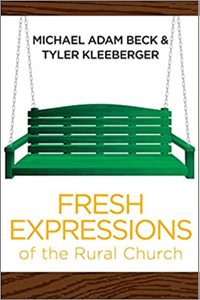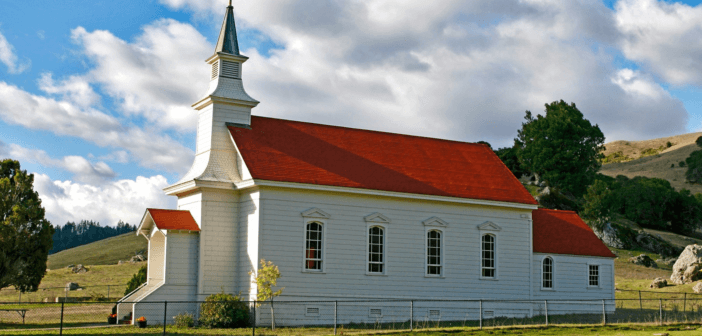Michael Adam Beck and Tyler Kleeberger describe how the unique demographics of rural churches bring not only the potential for intimacy and neighborliness but also an inherent diversity that forces smaller churches to do the hard work of creating unity amid differences.
Sometimes it’s easier to love the idea of people rather than the people themselves. Particular people are messy. Particular relationships with our neighbors are challenging. This is why most places have largely failed at the art of neighborliness. It requires us to cultivate circles that heal.
Rural communities are particularly wired for these kinds of circles because we can in some sense know all our neighbors. We can enter into smallness and particularity that is more challenging in urban settings with anonymous larger populations. But it’s precisely in going particular that there are universal implications. What we should see is that the small demographic of rural communities offers unique outcomes in pursuit of belonging.
Intimacy and proximity
Rural churches have the unfortunate blessing of being a small sample size. We can know everyone with an intimacy and proximity that is impossible in dense, urban, or suburban areas. Within the several square miles of a community’s vicinity, it is literally possible to know everyone. The downside of this is that we also get to know everyone with intimacy and proximity. The sentiment of suburban isolation or being lost in the urban crowd can sound appealing after you have seen the tenacity with which rural communities can implode with gossip. We ought not to see this intimacy as inherently good or bad.
In ages past this was always seen as a benefit. Neighbors were necessary to survival and not just economically. Sure, there are the tropes of sharing a cup of sugar, the interdependence necessary to be able to eat, survive, endure harsh winters, and deal with the traumas and tragedies that ripple through small communities with incessant velocity was what kept the small tribes of rural areas alive. Being able to know one another meant being able to endure the best and worst of life with one another.
The human person has a capacity when maintaining interpersonal relationships. Accounts vary. Some say 150 relationships, but the common claim is 200 relationships. In this respect, the small demographic is an advantage for being the church we can literally serve and see to the shalom of each member of our place.
The inherent diversity of rural churches
Yet, the small cohort is also a disadvantage. If you can have a community of 200 people, but you have one million to choose from, you greatly increase the odds that you are going to like all the people involved. In urban settings, the search for community becomes a bit like dating. You search around, court potential connections, and then maintain relationships with the people who are most like you. Not only are you able to escape or isolate from people you don’t want to know, but also you have many more options.
This brings us to the second factor of belonging in rural communities with small demographics: you can’t choose your neighbors. A rural church, therefore, is less likely to have a community who all think the same. The neighbors with a dozen broken cars in their front lawn and the wealthy farmer with a pristine lawn and gated driveway both must be neighbors. And in rural communities, they are both just as essential to the health of the place. In a rural community, we need each and every one of them.
John Wesley understood this dynamic in the church. In observing the “catholic spirit” of the church, he stated, “Though we do not think alike, can we not love alike?” While most rural churches are not known for being racially diverse, they cannot avoid mental, emotional, existential, economic, generational, and ideological diversity. On a given Sunday, there may be hillbillies and hippies; collared conservatives and high-brow liberals; industrial farmers and old-school homesteaders; and most people are a bit of all of them at the same time.
Rural churches can’t afford to ask, “What is you political perspective?” as some sort of metal detector for letting people in or turning them away. We don’t get to choose who belongs to our communities.
Creating unity within diversity
The question rural churches must ask is, “What do you need to do so that we can all sit in the room together?” Because we can love alike even if we don’t all think alike. There needs to be a common bond, a common vision, and a shared imagination that holds us together despite the tenuous diversity that could tear us apart.
Larger places might be able to create unity without diversity. Our small demographics force us to do the hard, yet beautiful work of creating unity within diversity. We are just a bunch of humans learning to belong to our place together. When we start here, we can all sit at the table and continue to walk together, learn together, and grow as a result of our unique experience together.
These are circles that heal in the rural church. We know because we found them for ourselves.
 Excerpted from Fresh Expressions of the Rural Church (Abingdon Press, 2022) by Michael Adam Beck and Tyler Kleeberger. Used by permission. The book is also available at Cokesbury and Amazon.
Excerpted from Fresh Expressions of the Rural Church (Abingdon Press, 2022) by Michael Adam Beck and Tyler Kleeberger. Used by permission. The book is also available at Cokesbury and Amazon.
Related Resources
- 3 Unique Gifts of the Rural Church by Allen T. Stanton
- Small Church as Surrogate Family by Lewis A. Parks
- Intergenerational Ministry and the Small Church by Brandon J. O’Brien
If you would like to share this article in your newsletter or other publication, please review our reprint guidelines.







